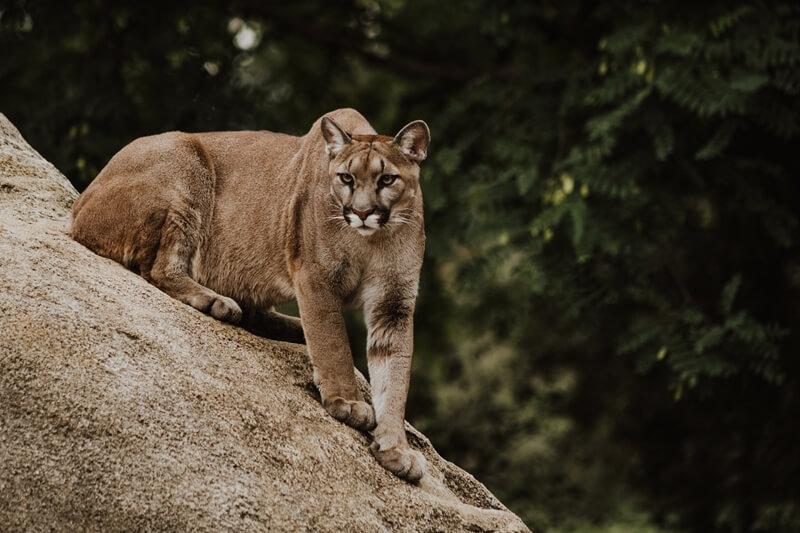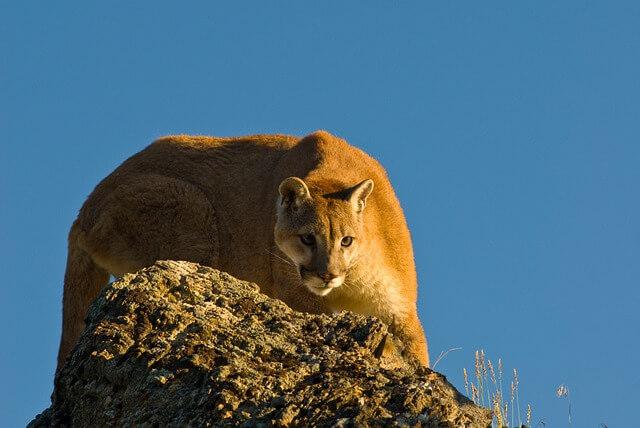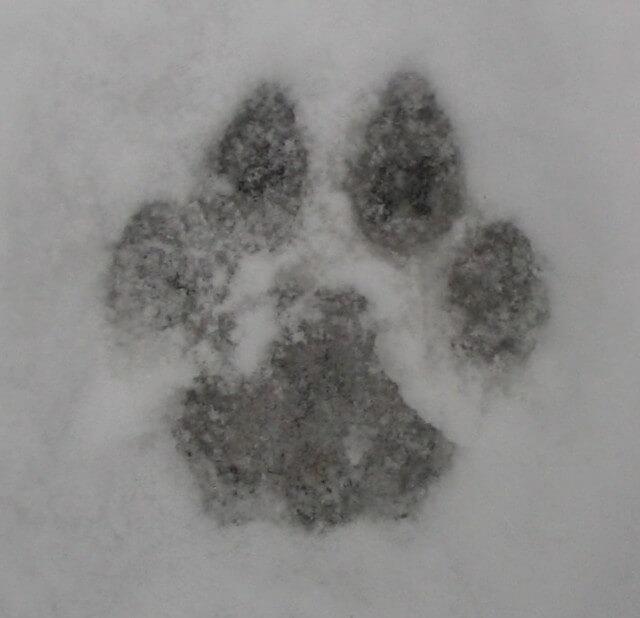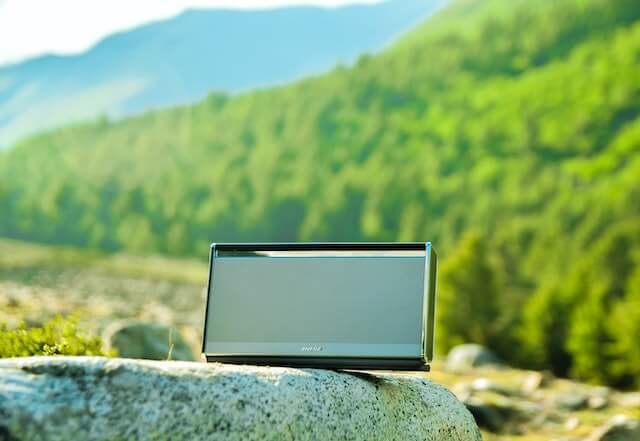A common theme among new and leisurely hikers is to set out on their outdoor adventure without considering any of the risks or challenges they might face. Hiking is an exciting activity and a great way to experience the beauty that mother nature has to offer but even the most experienced of hikers know to be cautious and well prepared before the adventure can start.

Some of the questions that you should ask before hiking might be, what type of safety gear should I bring? What is the weather forecast? Are there any dangerous animals I should be aware of? These are all important questions to ask and will require some diligent research before attempting the trail you plan to follow.
That being said, the dangers present on a hike will vary greatly depending on the environment, location, and overall difficulty of the hike. For example, a hiker climbing through snowy peaks will require warm winter coats and an ice axe, but the same won’t be said for a hiker that is challenging a small lake or desert trail.
Nonetheless, in this article, we will be discussing the safety precautions to be taken when hiking in areas that are native to mountain lions and how you can prepare yourself to avoid an unfriendly encounter.
What to know about Mountain Lions?
A mountain lion also known as a ‘Cougar’ belongs to the cat species and is native to the Americas. They range greatly in size, but male cougars can weigh up to 220 pounds. A mountain lion is covered in tan/beige fur and has a white/gray underbelly. They also have black fur around the snout, tail tip, and ears. Mountain lions are incredibly fast and can reach speeds of up to 80 km/h. This makes it easy for them to hunt down their prey. They are a carnivorous species and mostly feed on larger animals like deer, coyotes, and sheep.
Mountain lions are capable of living within multiple different ecosystems, so long as it provides proper shelter and nourishment. This is not limited to deserts, forests, mountains, and various other terrains. Although, the majority of mountain lions reside within the United States and certain parts of Canada. It’s important to note that these big cats are notoriously territorial and it’s best to avoid areas they have been known to live in.

Fortunately, mountain lions are not actively seeking to attack people. They are more likely to stay out of your way, so long as you stay out of theirs. Even so, it is still important to be prepared and take extra precautions if you find yourself hiking in an area where mountain lions might reside.
Therefore, In the article, we will be answering the following questions:
- What are the signs that a mountain lion is in the area?
- How can I deter an encounter with a mountain lion?
- How can I defend myself if I’m attacked by a mountain lion?
- What gear should I bring if I’m in an area where mountain lions live?
What to watch out for if you’re worried a mountain lion might be nearby
Mountain lions are well known for their stealth and stalking abilities. This makes it highly likely that you will spot one in the wild. Nevertheless, it’s still important to stay alert and cautious of mountain lion activity when you’re out on a hike or a camping trip. To make things easier, we have compiled a list of some of the more obvious signs you can watch out for when out for an adventure.
1. Mountain Lion Tracks and Footprints
It can be difficult to identify the difference between a mountain lion’s tracks and that of another animal. We advise having a saved image on your phone or printing one out and keeping it handy if the occasion does arise.
The difficulty of identifying a footprint will also greatly depend on the environment that it has been found in. A footprint in the snow or mud would be easier to identify than one found in dirt or gravel. That being said, there are some distinguishing features between the track of a mountain lion versus the likes of a coyote or wolf.

For one, mountain lions normally keep a steady and slow pace while evenly distributing their weight. The result is tracks that form a neat trail with the footprints from the front and hind legs overlapping on the same spot.
As previously mentioned, mountain lions are a part of the cat species and have the typical imprint of a cat but by a larger standard. This can be evident by the shape of the heel. A cougar will have two lobes on the top of the heel and three on the bottom. The lion may also use their claws to help gain grip when walking on difficult terrain. This isn’t always the case but something to look out for when evaluating the tracks.
2. Mountain Lion Scat
The scat of a mountain lion is likely to be very dense and segmented. Its size can also be compared to that which is produced by a larger coyote or dog. This makes it difficult to differentiate from other animals.

As discussed, mountain lions are carnivorous and rarely eat any sort of vegetation or plants. This is evident in the contents of their scat which will likely contain fur, crushed bones, and teeth, resulting in a whitish colour.
A mountain lion may also leave scratch markers which are dirt and debris pushed into a pile and then marked with their urine and scat.
3. Evaluating the Environment
It isn’t always easy to determine if a mountain lion is nearby by simply looking for scat or trying to figure out if the tracks might belong to these large cats. But perhaps the easiest way is to evaluate the environment and terrain in which you’re hiking. A trail with plenty of wild deer or sheep is a good indicator that mountain lions may present.

A dead carcass is another big indicator of the possibility of mountain lions in the area. These wild cats will feed off any residual meat left behind and the scent of the carcass may attract them to the area.
How to Avoid Mountain Lion Encounters
Recognizing the signs of a mountain lion’s presence is only the first step to protecting yourself from accidentally encountering one in the wild. It’s equally important to avoid travelling through their territory and hunting grounds. Here are some ways you can go about doing this:
Avoid areas with mountain lions altogether
If you want to be extra cautious in avoiding these large cats, then make sure to stay away from hikes that have been known to actively host them. The vast majority of mountain lions are known to roam in the Western half of the United States and Canada.

The park rangers at these forests and mountains are diligent about posting notices and signs at trailheads to warn hikers of cougar sightings. If you happen to find yourself on a hike with posted signs then be sure to gather your necessary equipment, stay alert, and proceed with extra caution.
Avoiding mountain lions when hiking in areas they are known to frequent
Mountain lions will not go out of their way to target humans and following proper safety precautions should keep you from harm’s way. They will often stalk their opponent for a period of time before even deciding to attack. This allows them to watch and decide whether you’re prey for them to eat or a predator to avoid.
This provides an opportunity to make your presence known and let the lion know that you’re not a quick and easy meal. It’s better to avoid hiking alone but to go in groups and with other experienced hikers. Noise is another great way of scaring off mountain lions. A speaker playing music, talking loudly, or most other activity that produces a constant noise will be helpful in keeping the curious felines away.

It’s also advised to hike during daylight hours and remain on the designated hiking trails, as these are frequented by others and most mountain lions will know to avoid them. If you happen to be hiking with kids or pets, then make sure to keep them close at all times and educate them on what to do if they happen to encounter a mountain lion.
Kids and pets are more likely to be seen as prey and can even attract the large cats. A kitten or baby mountain lion should be avoided at all costs. The mother won’t be far behind.
Camping in mountain lion territories
If you find yourself setting up camp in an area known to be frequented by mountain lions, then make sure to take a number of precautions. Firstly, don’t choose a campsite near any cliffs or overhangs as this is where the cougars like to hang out.
Avoid setting up camp in an area you may have discovered any scratch marks, scat, or other signs of a mountain lion being present. Make sure not to leave out any food overnight or pets unattended as this can be enticing enough to bring one of them around for a visit.
How to Defend yourself if a Mountain lion decides to attack
A mountain lion is unlikely to make itself known or visible to its prey. So, if you do happen to spot a mountain lion or even catch a brief glance of one, then you should consider this as an alarm and act quickly.
This includes making yourself appear as large as possible. If you are with others, then group together and stand tall. If you are with kids or pets, then pick them up without bending over or turning around. Size is the most important step and uses whatever you have on you to appear as large as possible.
This could include raising your arms above your head, waving a branch in the air or opening your jacket as wide as possible. The goal is to make the lion believe that you are not prey but possibly a dangerous animal yourself. Therefore, the larger you seem the more dangerous you will come across to the mountain lion.

Avoid making any movements that would replicate that of its prey. Do not run from the lion or bend over as this might make it seem like you walk on four legs.
The vast majority of mountain lions are not interested in you and will not attack unprovoked. They would much rather escape and avoid any confrontation. So, make this easy and don’t corner them against the side of a cliff or block them in any way.
Don’t look away or turn your back on the lion but stay calm and talk to them firmly. Keep your body and head position straight towards the cougar and use any objects that can be reached without bending over to appear larger.
If the mountain lion continues to act aggressively, then consider throwing sticks, rocks, water bottles, or whatever you have on your person in its direction. Don’t aim directly at the cougar but in front of its head to appear intimidating and as a warning for them not to attack.
Take branches off from a tree, use the items in your backpack or pockets, or grab stones from the sides of a cliff. These things can often be reached without bending over and will help scare off the lion. If the level of hostility continues to rise, then start to throw the objects at the lion’s body.
Mountain lions are conditioned to attack the head and neck. This is how they take down prey like deer and sheep. This same method will likely be used if you find yourself being attacked by a large cat. To avoid a lethal injury, it is important to try and remain standing while using whatever is accessible to create a shield between yourself and the lion.

This could be a backpack, walking stick or branches from a nearby tree. There have been many cases of hikers fighting back against mountain lions and avoiding serious injuries. A mountain lion won’t keep attacking if they believe that you are too difficult to beat!
What gear can you bring to help protect yourself from a mountain lion encounter or attack
As previously stated, it is very unlikely that you will find yourself in a dangerous encounter with a mountain lion. It is important to pack basic safety gear for any hike you decide to challenge and most of it can be used to help fend off an attack. Here are some of the tools and equipment that may come in handy:

- Trekking Poles/Walking Stick: This can be used to make yourself appear larger and more dangerous to a mountain lion. It can also be used to defend yourself in the unlikely case of an attack.
- Backpack: A backpack can be used to carry all the things listed here but also to provide a barrier between yourself and the mountain lion if an attack happens.
- Air Horn: A blast from an air horn might be enough to keep any curious cats or even other animals well out of your way. It doesn’t hurt to send out a warning shot if you’re wandering into a questionable area.
- Speaker: This has a similar effect to the air horn. It’s easy to play music from the speaker while hiking and make sure your presence is known. This allows the cougars to know you’re coming and stay out of your way.
- Binoculars: These are fun pieces of equipment that can help you better enjoy nature and wildlife but also watch out for lions that might be hanging out around some nearby cliffs. Read this guide on how to choose your binoculars.
- Bring & Contrasting Clothing: This clothing combination will work to break up your silhouette and make you appear less like a deer and prey to the lion.
- Bear spray: It may be titled ‘bear spray’ but the effects are the same when used on a mountain lion. This can be used to help defend yourself in the case of an attack. Point and spray in the direction of the lion to keep them away. Don’t forget to check the expiration date of your spray before heading out on your hike and invest in a high-quality product from a reputable store.
Mountain lions are dangerous animals and should be treated cautiously but they are not out to target humans. The potential encounter with one of these large cats should not be enough to keep you from enjoying the beauty that nature has to offer. The number of people that have actually been attacked by mountain lions are extremely low.
The best thing you can do to prepare is by researching the trail you plan to hike, bringing the proper equipment, and learning to coexist with these large cats.
Frequently Asked Questions
Q: What should I do if I encounter a mountain lion while hiking?
A: If you encounter a mountain lion while hiking, stay calm, maintain eye contact, and make yourself appear larger. Back away slowly, speak firmly, and avoid running. If the mountain lion approaches, be aggressive, throw objects, and fight back if necessary. Report the encounter to wildlife authorities.
Q: How can I reduce the risk of encountering a mountain lion on the trail?
A: Reduce the risk of encountering a mountain lion by hiking in groups, making noise while hiking, avoiding dawn, dusk, and night hikes, staying on designated trails, and keeping children and pets close and under control. Familiarize yourself with local regulations.
Q: Are mountain lion encounters common while hiking?
A: Mountain lion encounters while hiking are rare. They tend to avoid humans and are more active during dawn, dusk, and night. Follow safety guidelines to minimize risk and enjoy your hike.
Q: What are signs of mountain lion activity in an area?
A: Signs of mountain lion activity include tracks, scratch marks on trees or rocks, and covered wildlife kills. Be cautious if you spot these signs and report significant activity to wildlife authorities.









